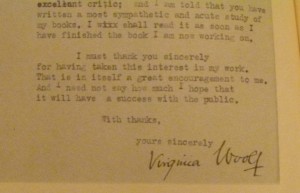 When I last wrote about my longtime author Ruth Gruber—who in May 2011 received the International Center of Photography’s Cornell Capa Award, a few months before turning 100—it was to honor her during Women’s History Month. Now I’m delighted to see that Open Road Integrated Media has picked up another book by Ruth for their ebook program.The latest title, coming after four earlier ebook editions, is Virginia Woolf: The Will to Create as a Woman. I published the printed book in 2004, when I was editor-in-chief of Carroll & Graf.
When I last wrote about my longtime author Ruth Gruber—who in May 2011 received the International Center of Photography’s Cornell Capa Award, a few months before turning 100—it was to honor her during Women’s History Month. Now I’m delighted to see that Open Road Integrated Media has picked up another book by Ruth for their ebook program.The latest title, coming after four earlier ebook editions, is Virginia Woolf: The Will to Create as a Woman. I published the printed book in 2004, when I was editor-in-chief of Carroll & Graf.
The book on Woolf is a remarkable document—the core of it being Ruth’s 1931 dissertation, “Virginia Woolf: A Study.” Her first chapter, “The Poet Versus the Critic” opens with lines that lay down a new marker setting forth the idea of women’s studies in literature decades before the term would have widespread salience:
Virginia Woolf is determined to write as a woman. Through the eyes of her sex, she seeks to penetrate life and describe it. Her will to explore her femininity is bitterly opposed by the critics, who guard the traditions of men, who dictate to her or denounce her feminine reactions to art and life.
An understanding of how Ruth Gruber, a Brooklyn-born Jewish woman came to be in Germany during the early days of Nazism where she would write and publish the first known feminist interpretation of Virginia Woolf’s work is inseparable from her biography, so for readers of this blog who may be unfamiliar with Ruth’s life and career, here’s a sketch.
Born in 1911 in Williamsburg, Brooklyn, Ruth was always precocious. She received her B.A. from NYU at age sixteen; an M.A. in German language and literature from the University of Wisconsin at eighteen; and at twenty was offered a fellowship to participate in an exchange program at the University of Cologne. Early in her studies there, she was asked by a professor if she would consider reading the work of Woolf, and embark on a doctoral thesis about her. I’ve imagined that Ruth’s professors must have realized they had this bright female student in their midst, a reader of English and German, and when might they again have such an opportunity, especially with international exchanges precarious? Ruth demurred—she had not yet read Woolf’s work, she could afford to be in Cologne only one year, her parents would not let her stay longer, the work would surely take longer—but soon she said, “I’ll try.” Taping a picture of Woolf above her desk, she began reading all of Woolf’s books published to that point, pondering their meanings and the significance of Woolf’s creative enterprise.
Ruth did complete the work in less than a year, successfully defended her thesis, and was awarded a Ph.D. Upon her return to the U.S. in 1932 the New York Times wrote: ” When the gangplank went down on the St. Louis [the same ship that seven years later would be denied sanctuary at ports in the US and Cuban] an attractive Brooklyn girl of twenty years stepped ashore bearing a coveted degree of Doctor of Philosophy . . . She is now the youngest Doctor of Philosophy in the world.” This period of her life is documented in two of her nineteen books, both available from Open Road, the Woolf title just added to their list, and Ahead of Time: My Early Years as a Foreign Correspondent,** which is also the title of a recent documentary on Ruth’s life and career up through the years immediately following WWII.
Despite the notoriety of her youthful doctorate, the Depression had begun and Ruth found little work upon her return to the States, so she continued traveling and trying her hand at journalism and photography. In 1935, the thesis was published as a book in Germany by the Tauchnitz Press, which had a list of English-language titles, including Woolf’s The Waves. Ruth sent a copy of the published book to Woolf in London, thus beginning a lengthy correspondence between the two women that culminated in Ruth paying a visit to Woolf at her Bloomsbury home that year.
Ruth was greeted at the parlor door by husband Leonard. The meeting is covered in detail in both of the above books, but suffice it to say that a somewhat awkward conversation followed, with Virginia stretched out on a rug in front of the fireplace. She offered an ambiguous comment about whether she had read the thesis, and denied that she had anything to say on the subject of Ruth’s latest undertaking, a fellowship to make “a study of women under democracy, fascism, and communism.” Though Ruth hadn’t intended to come as a supplicant, that’s how Woolf interpreted her visit. Smoking a cigarette in a long holder, Virginia said, “I don’t know how I can help you. I don’t know a thing about politics. I’ve never worked a day in my life.” Ruth was “startled” that “she did not think publishing ten books, countless essays, and brilliant book reviews was work.”
In 1989, Ruth was startled again when she discovered that Virginia had written about her in her letters and diaries, in disparaging and anti-semitic terms, including in this diary passage: “Must get up and receive Miss Grueber [sic] (to discuss a book on women and fascism–a pure have yer . . .) in ten minutes.” In Eric Partridge’s books on slang, Ruth read that “a pure have yer” referred to a 1) wanton, kept woman; 2) dog dung; 3) a swindle, or deception. Ruth wondered, Is that what Virginia Woolf had thought of me? Ruth pondered this over the years, until in 2005, at the back of an old file cabinet, she discovered the letters she’d received from Woolf, and read them for the first time in decades.
With the discovery of this new material, Ruth and I began to discuss reissuing her thesis, surrounding it with the letters and a new Introduction in which she would grapple once and for all with the meaning of her long-ago encounter with Woolf and its aftermath. Later in 2005, once we’d made digital facsimile reproductions of the letters and other pertinent materials in Ruth’s archive she donated all her Woolf materials to the New York Public Library, whose holdings of Woolfiana surpass any institution in the world. Also in that year Virginia Woolf: The Will to Create as a Woman was published in the expanded edition we had envisioned. Like the letters, the thesis was reproduced in facsimile, which in this case meant we were able to reprint the gorgeous letter-press typesetting that Tauchnitz had struck for the book in 1935. Carroll & Graf was dissolved in 2006, but for the record the 2005 paperback edition is widely available from second-hand booksellers.
Ruth’s new introduction ran to nearly forty pages. In it, she details a correspondence she’d shared with Nigel Nicolson, son of Virginia’s lover Vita Sackville-West. He wrote, “I fear that you may have been hurt by her references to you, but she was like that in her diary and letters, though perfectly courteous in conversation. It’s one of the things I deplore about Virginia, her cattiness, contempt for almost everyone who were not her friends, an occasional touch of anti-Semitism, her snobbishness and jealousy.” Ruth continues, “In those seventy years since I sat worshipfully in her parlor, I learned more of her violent manic depressions, her wild helpless swings; by turns critical, nasty. . .moving to exquisite warmth and generosity. I learned of her constant fear that she was going insane. . . .” Ruth recalls, “In 1941, when the pain of living had finally become too great for her, she wrote two final loving letters to Leonard before she walked into the river. . . . Those two love letters. . . and her three letters to me, helped me work through my own anger and disillusionment, which now seem trifling in comparison to the agony she endured. They helped restore the admiration I had for her when I was nineteen and just discovering her genius. I realized that she had lived her entire life with a will to create as a woman. That was the most important lesson she taught me. In 2004, I reread my dissertation in the light of that new understanding, underlining paragraphs that mean as much to me now as they did when I wrote them more than seventy years ago.” Then Ruth ended her Introduction by quoting the first paragraph from her thesis that opens “Virginia Woolf is determined to write as a woman,” cited above in the third paragraph of this recollection.
In future writings about Ruth Gruber for this blog, I will chronicle many of her other achievements. For now, let it suffice to say that after 1935 Ruth would continue her worldwide study of women. She would also take photographs everywhere she went—including in Siberia, Alaska, and above the Arctic Circle; in post-WWII Europe, when she would become the foremost chronicler of the thousands of displaced persons (DPs); and in the Middle East, where she would travel with the international committees tasked with resolving the future of Palestine and the fate of the Jews who’d survived the Holocaust—always remembering the inspirational message that her photographic mentor Edward Steichen instilled in her: “Take pictures with your heart.”
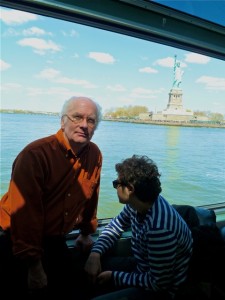

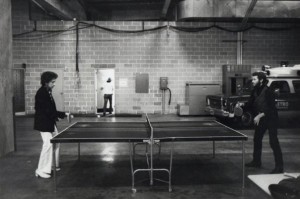 Among the pieces of journalism and commentary I’ve read about Levon Helm since word of his terminal condition was released by his family last week, and then since his death on Thursday,
Among the pieces of journalism and commentary I’ve read about Levon Helm since word of his terminal condition was released by his family last week, and then since his death on Thursday, 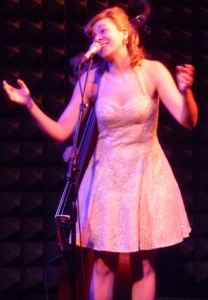 Wednesday night was another great night for live music by Canadian artists in New York City. First stop on the evening’s program was Joe’s Pub to hear
Wednesday night was another great night for live music by Canadian artists in New York City. First stop on the evening’s program was Joe’s Pub to hear This morning I met an author whose work I really admire. My breakfast mate was Jim Higdon, author of The Cornbread Mafia: A Homegrown Syndicate’s Code of Silence and the Biggest Marijuana Bust in American History, which is officially released tomorrow. I’d never met Jim, though I had a role in insuring that his book had a chance to get published. When I read the draft manuscript I wasn’t in a position to publish it myself, but I really enjoyed this gonzo true-crime narrative, and so recommended it to longtime Carroll & Graf colleague and friend, Keith Wallman, now an editor at Lyons Press. It was precisely the sort of book he and I combined to edit and prepare for publication many times, with books like David Pietrusza’s Rothstein: The Life, Times, and and Murder of the Criminal Mastermind Who Fixed the 1919 World Series; Barbara Raymond’s The Baby Thief: The Untold Story of Georgia Tann, the Baby Seller Who Corrupted Adoption; Alan Bisbort’s “When You Read This, They Will Have Killed Me”: The Life, Redemption, and Execution of Caryl Chessman, Whose Execution Shook America; and Chuck Kinder’s Last Mountain Dancer: Hard-Earned Lessons in Love, Loss, and Outlaw Honky-Tonk Life, to name only four of many dozen books we published together.
This morning I met an author whose work I really admire. My breakfast mate was Jim Higdon, author of The Cornbread Mafia: A Homegrown Syndicate’s Code of Silence and the Biggest Marijuana Bust in American History, which is officially released tomorrow. I’d never met Jim, though I had a role in insuring that his book had a chance to get published. When I read the draft manuscript I wasn’t in a position to publish it myself, but I really enjoyed this gonzo true-crime narrative, and so recommended it to longtime Carroll & Graf colleague and friend, Keith Wallman, now an editor at Lyons Press. It was precisely the sort of book he and I combined to edit and prepare for publication many times, with books like David Pietrusza’s Rothstein: The Life, Times, and and Murder of the Criminal Mastermind Who Fixed the 1919 World Series; Barbara Raymond’s The Baby Thief: The Untold Story of Georgia Tann, the Baby Seller Who Corrupted Adoption; Alan Bisbort’s “When You Read This, They Will Have Killed Me”: The Life, Redemption, and Execution of Caryl Chessman, Whose Execution Shook America; and Chuck Kinder’s Last Mountain Dancer: Hard-Earned Lessons in Love, Loss, and Outlaw Honky-Tonk Life, to name only four of many dozen books we published together.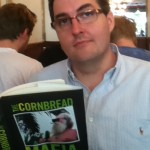

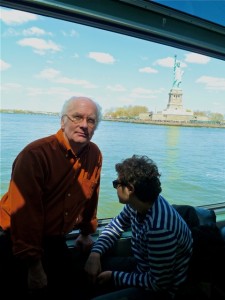
 When I
When I